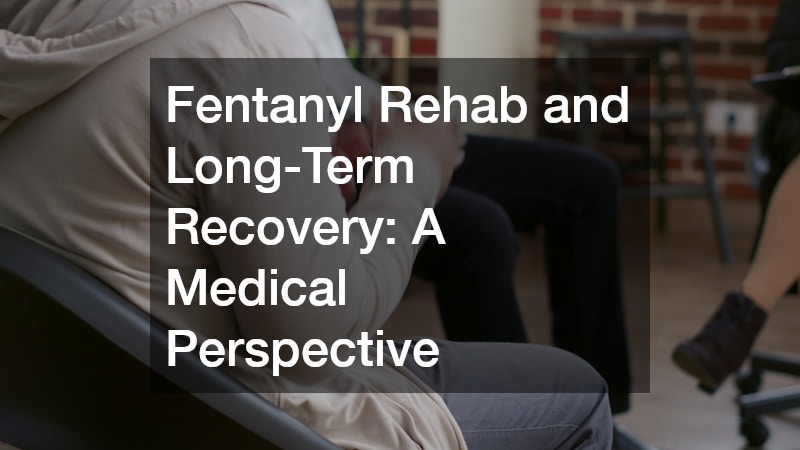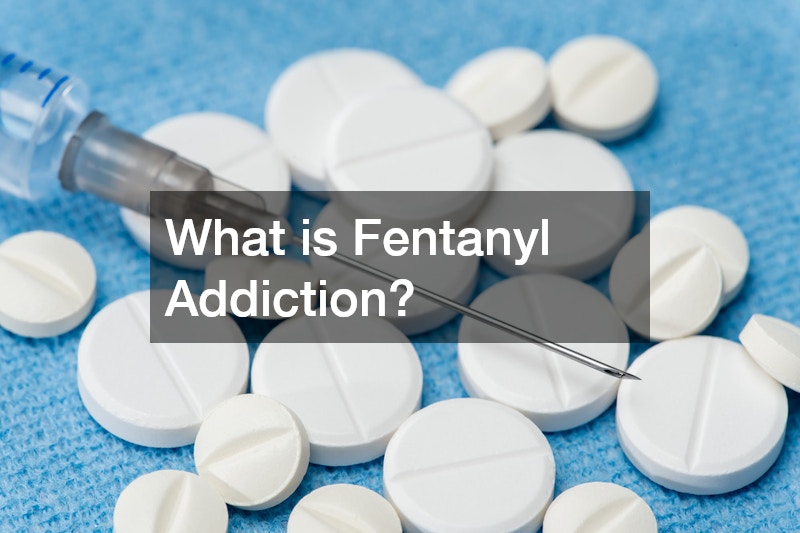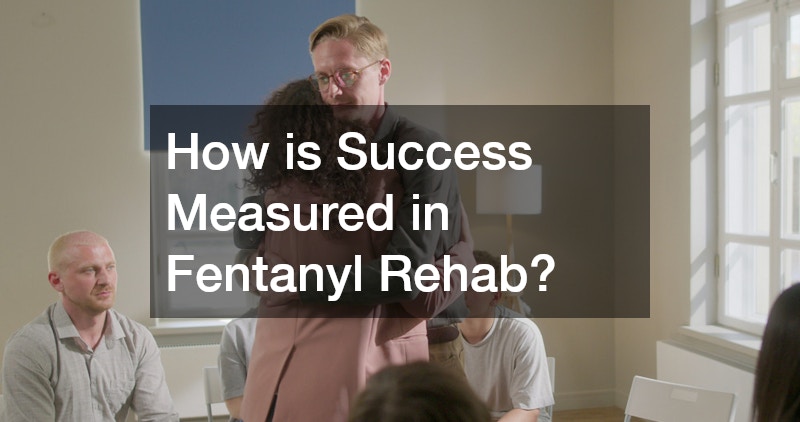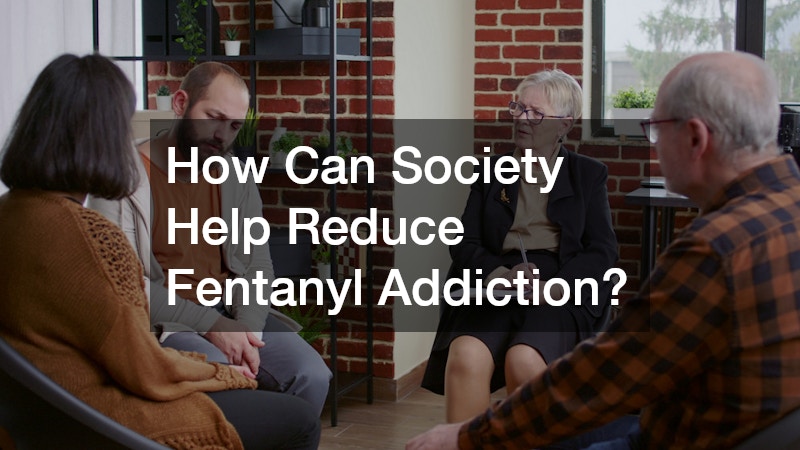Fentanyl addiction has emerged as one of the most pressing public health crises in modern medicine. As a synthetic opioid far stronger than morphine, fentanyl’s potency has led to widespread misuse, accidental overdoses, and significant challenges for healthcare providers. Understanding fentanyl rehab from a medical perspective is critical to achieving long-term recovery and reducing relapse rates. Treatment requires a multidisciplinary approach that includes medical detoxification, behavioral therapies, and ongoing support to address both the physical and psychological aspects of addiction. Hospitals and clinics providing fentanyl rehabilitation rely on coordinated care systems, where every detail—from medical waste disposal protocols to emergency lighting in treatment rooms—plays a vital role in maintaining a safe environment.
In addition, the increasing use of medical inventory software helps treatment facilities track medications, supplies, and patient records with precision. Professionals involved in fentanyl rehab, including a physician recruiter, pain specialist, and pharmacists trained through a pharmacy technician program, contribute to ensuring that each patient receives personalized, evidence-based care. As new treatments like ketamine therapy gain recognition for their potential in managing opioid dependency and depression, the medical field continues to evolve. This article explores fentanyl rehab comprehensively, offering insight into the process, challenges, and strategies for sustainable recovery.
What is Fentanyl Addiction?
Fentanyl addiction occurs when prolonged opioid exposure alters the brain’s reward and pain-processing systems. Defined by uncontrollable cravings, tolerance, and physical dependence, this addiction can develop rapidly due to fentanyl’s high potency. Causes often include medical exposure through prescribed pain relief, self-medication for untreated psychological distress, or misuse of illicit fentanyl-laced substances. Common signs and symptoms include drowsiness, confusion, respiratory depression, and social withdrawal, all of which can lead to significant lifestyle deterioration. A pain specialist typically identifies these symptoms during clinical evaluations, emphasizing the importance of early diagnosis. Statistics reveal that fentanyl-related deaths have surged dramatically, reflecting the drug’s devastating impact on communities.
Health facilities managing fentanyl cases rely on strict medical waste disposal standards to prevent accidental exposure and ensure staff safety. Moreover, proper emergency lighting in clinical units ensures uninterrupted monitoring during power outages—a critical factor in life-saving interventions. In recent years, professionals from fields like the pharmacy technician program have supported physicians by managing medication distribution and reducing the risk of dosage errors. Fentanyl addiction not only disrupts health and family stability but also burdens medical systems, underscoring the urgent need for structured rehab programs and sustainable recovery frameworks.
How Does Fentanyl Rehab Work?
Fentanyl rehab begins with an in-depth medical assessment to identify the patient’s physical condition, mental health status, and addiction severity. Physicians and addiction specialists collaborate to design individualized treatment plans that establish clear goals, including detoxification timelines and relapse prevention strategies. The detoxification process is closely monitored to manage withdrawal symptoms such as muscle pain, anxiety, and insomnia. A pain specialist may prescribe medications that ease discomfort and support patient stability during this critical phase. Throughout rehab, behavioral therapies like cognitive-behavioral therapy and group counseling address the psychological aspects of addiction. Proper sanitation towels, sterile tools, and regulated environments are vital in maintaining hygiene and preventing infection during medical procedures.
Modern treatment centers rely on medical inventory software to track medication supplies, ensuring compliance and minimizing human error. Furthermore, staff trained through a pharmacy technician program assist in medication management, ensuring accuracy and safety. Emergency lighting systems provide security during nighttime detox or emergencies, allowing healthcare workers to continue uninterrupted care. Ultimately, medical supervision throughout rehab not only enhances safety but also improves patient outcomes by integrating compassion, clinical precision, and evidence-based medicine.
What Are the Types of Fentanyl Rehab Programs?
Fentanyl rehab programs vary in structure and intensity, depending on the patient’s needs and the severity of addiction. Inpatient rehab centers provide 24-hour medical care and supervision, ideal for individuals at high risk of severe withdrawal or relapse. Outpatient rehabilitation programs allow patients to continue daily activities while attending regular therapy sessions, making them suitable for those with stable home environments. Residential treatment facilities offer long-term care in a structured setting, blending medical monitoring with behavioral support. For patients with co-occurring disorders, specialized dual-diagnosis programs integrate mental health and addiction treatment under one comprehensive plan. Choosing the right program depends on medical evaluations, family input, and the recommendations of a physician recruiter or addiction specialist.
Healthcare centers use medical inventory software to maintain essential medications and resources, while safety protocols—including emergency lighting and sanitation towels—ensure optimal clinical conditions. Additionally, professionals trained in a pharmacy technician program play a key role in managing medication-assisted therapies. Some advanced clinics also integrate innovative treatments like ketamine therapy for patients with persistent depression or trauma-related symptoms. Each program type, when aligned with a patient’s unique circumstances, enhances recovery potential and reduces the likelihood of relapse.
What Medications Are Used in Fentanyl Rehab?
Medication plays a pivotal role in fentanyl rehab, particularly during detox and maintenance phases. Opioid agonists such as methadone and partial agonists like buprenorphine help reduce cravings and withdrawal symptoms, while antagonists such as naltrexone block opioid receptors to prevent relapse. Medication-Assisted Treatment (MAT) combines these drugs with counseling and behavioral therapies for holistic care. The benefits include stabilized brain chemistry, reduced illicit drug use, and improved emotional regulation. However, medical supervision is essential to manage side effects and avoid dependency on replacement medications. Innovations in pharmacotherapy—such as extended-release formulations—are improving adherence and outcomes.
In clinical settings, pharmacy technician program graduates ensure proper dosing and medication tracking through medical inventory software systems. Clinics also maintain strict sanitation protocols using sanitation towels and proper medical waste disposal methods to comply with health regulations. Some rehab centers now explore adjunctive treatments like ketamine therapy, which may assist in easing depressive symptoms associated with withdrawal. Collaboration among pain specialists, nurses, and physicians ensures that medication management remains safe, effective, and patient-centered throughout the rehabilitation process.
How Can Family Support Aid in Recovery?
Family support is an integral part of the recovery process. The involvement of loved ones fosters emotional stability and accountability, which can significantly enhance rehabilitation outcomes. Families can participate in therapy sessions to understand addiction dynamics and develop communication strategies that promote trust and empathy. Support groups for families offer a platform to share experiences and receive guidance from healthcare professionals. When relapses occur, maintaining a supportive environment instead of assigning blame can make recovery more achievable. A physician recruiter may also help connect families with appropriate programs tailored to their loved one’s medical and emotional needs.
Facilities emphasize cleanliness and safety by using sanitation towels, reliable emergency lighting, and proper medical waste disposal, creating a healing environment for both patients and visitors. Families also play a key role in promoting healthy habits—such as encouraging balanced nutrition, regular exercise, and consistent therapy attendance. As part of comprehensive care, education about treatment methods like ketamine therapy or medication-assisted options empowers families to provide informed support. Their involvement strengthens motivation, enhances compliance, and lays the foundation for long-term sobriety.
What Are the Challenges in Fentanyl Rehab?
Fentanyl rehab presents multiple challenges that require medical, psychological, and social interventions. Psychological barriers—such as denial, shame, and fear—often prevent individuals from seeking help early. Physical withdrawal symptoms, including nausea, body aches, and insomnia, can be severe, making detoxification both painful and risky without professional care. Economic constraints and limited access to qualified treatment centers also hinder recovery for many patients. Additionally, stigma and discrimination surrounding addiction continue to discourage individuals from pursuing rehab. Pain specialists play a vital role in managing physical symptoms, while behavioral therapists address emotional challenges.
To maintain a sterile environment, treatment centers depend on sanitation towels, efficient medical waste disposal systems, and emergency lighting for safety compliance. Moreover, modern medical inventory software ensures the secure handling of controlled substances, preventing misuse or shortages. Collaboration among healthcare professionals—often coordinated by a physician recruiter—ensures comprehensive treatment coverage. For patients dealing with co-occurring disorders like depression or anxiety, innovative interventions such as ketamine therapy provide additional therapeutic support. Addressing these multifaceted challenges with compassion, technology, and medical precision remains key to achieving lasting recovery.
How is Success Measured in Fentanyl Rehab?
Measuring success in fentanyl rehab involves more than just abstinence from opioids. Physicians and addiction experts evaluate a variety of metrics, including physical health improvements, mental stability, social reintegration, and overall quality of life. Long-term sobriety rates provide quantitative insight, but behavioral improvements—such as restored family relationships and consistent employment—reflect deeper recovery success. Patient-reported outcomes also help identify areas needing further support. A physician recruiter may use these metrics to assess program efficacy and recruit professionals who can strengthen clinical teams. Clinics equipped with medical inventory software can track medication compliance and treatment milestones efficiently.
Clean and safe environments supported by sanitation towels, medical waste disposal protocols, and emergency lighting ensure continuity of care. Additionally, pain specialists and therapists assess improvements in emotional resilience and coping mechanisms. Success is also influenced by ongoing access to therapy, support groups, and education about health-related practices such as micro needling or managing thinning hair, which can improve self-image and confidence. Ultimately, measuring success in fentanyl rehab means focusing on holistic recovery—physical, emotional, and social stability sustained over time.
What Role Does Aftercare Play in Long-Term Recovery?
Aftercare programs are vital for sustaining recovery after completing formal fentanyl rehab. These programs include continued therapy, support groups, and regular check-ins with healthcare providers to monitor progress and prevent relapse. Continuing counseling sessions allows individuals to address lingering emotional issues and refine coping strategies. Many patients transition into sober living homes, where structured environments support accountability. Medical inventory software helps aftercare facilities track medications for patients still using maintenance therapies. Additionally, emergency lighting and sanitation towels ensure safe, hygienic conditions in residential settings. Professional input from a pain specialist or physician recruiter ensures ongoing access to qualified clinicians.
Incorporating innovative approaches like ketamine therapy or mindfulness-based treatments can also enhance long-term emotional well-being. A pharmacy technician program graduate may assist in managing medication schedules to maintain consistency. Aftercare serves as the bridge between rehab and independent living, offering continuous support, structure, and medical oversight. With the right combination of follow-up care, community engagement, and family involvement, individuals can achieve enduring sobriety and rebuild fulfilling, substance-free lives.
Are There Alternatives to Traditional Fentanyl Rehab?
While traditional rehab programs remain foundational, alternative therapies have gained traction in treating fentanyl addiction. Holistic approaches incorporate mindfulness, yoga, and nutrition counseling to address physical and emotional balance. Technology-assisted therapies, such as telemedicine and mobile recovery apps, expand accessibility for those unable to attend in-person treatment. Complementary practices like acupuncture and massage therapy support relaxation and withdrawal management. Some medical facilities have begun integrating ketamine therapy to alleviate depression and anxiety symptoms associated with recovery. Additionally, community-based initiatives and outpatient programs offer flexible options for individuals balancing work or family obligations.
Advanced clinics utilize medical inventory software to manage supplies efficiently and maintain compliance with safety regulations. Sanitation towels, emergency lighting, and proper medical waste disposal remain critical in upholding health standards. Collaborations between pain specialists, counselors, and a physician recruiter ensure that patients receive coordinated, multidisciplinary care. By combining traditional medicine with innovative alternatives, rehab programs can better address individual needs and create more inclusive recovery pathways that enhance long-term success.
How Can Society Help Reduce Fentanyl Addiction?
Combating fentanyl addiction requires collective societal effort through education, legislation, and innovation. Public awareness campaigns are essential for teaching communities about the dangers of fentanyl misuse and available treatment resources. Policy measures should support expanded access to rehab programs, funding for medical training, and stricter control over illicit opioid distribution. Education initiatives—especially within pharmacy technician program curricula—can ensure safer prescription practices. Research and innovation, including emerging treatments like ketamine therapy, help improve medical understanding of addiction mechanisms.
Collaboration between sectors is equally vital: healthcare professionals, law enforcement, and policymakers must work together to strengthen prevention and intervention systems. Hospitals implementing medical inventory software and ensuring proper medical waste disposal play a crucial role in maintaining safety standards. Clinics also rely on emergency lighting and sanitation towels to uphold treatment quality and protect both staff and patients. Society’s collective response—rooted in compassion, accountability, and science—can help reverse the devastating effects of fentanyl addiction and build stronger, healthier communities.
Fentanyl addiction poses one of the most complex medical challenges of our time, demanding coordinated care and innovation. Effective rehab and long-term recovery depend on integrating medical treatment, psychological therapy, family support, and consistent aftercare. A comprehensive approach—supported by pain specialists, physician recruiters, pharmacists, and mental health professionals—ensures every patient receives holistic and compassionate care. Facilities rely on medical inventory software, sanitation towels, emergency lighting, and regulated medical waste disposal to maintain safety and efficiency. Adjunctive methods like ketamine therapy and educational programs such as the pharmacy technician program continue to advance treatment standards. Ultimately, recovery from fentanyl addiction is not a single event but a lifelong process that thrives on medical precision, community support, and personal determination. By uniting clinical excellence with social awareness, the healthcare field can pave the way toward sustainable recovery and a future free from opioid dependency.




